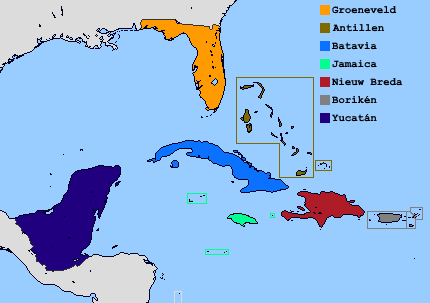The Bloemenlander government system is known as the Council of Governors. The Council of Governors is made up of elected Governors who serve for 3 year terms. Governors are elected by population, with one being elected for every 500,000 people, rounded up. However political parties are officially outlawed, with the Governors being expected to represent their municipalities and rural areas directly. The Governors can pass laws with a majority of 55% +1, and need a majority of 2/3rds to declare war. In order to change the constitution or the governance system of Bloemenland the Governors need a 2/3rds majority, and a referendum by the people with 55% +1 being in favour.
The head of the Council of Governors is the Stadtholder, who is elected in a national election, has veto powers, represents the nation internationally, and is the head of the military. The Stadtholder serves for a 5 year term. In the event of the death of the Stadtholder, a new election will be called within 2 months to elect a new Stadtholder, the Council of Governors will nominate one member to represent the country until said election can take place. There is no limit to how many terms that a Governor or a Stadtholder may serve, but traditionally both serve a maximum of 5 terms. Today there are 85 Governors who help govern the nation alongside the Stadtholder.
The Council of Governors appoints a court of 7 judges every 5 years, in line with the elections for Stadtholder, who serve to interpret the laws of the nation. The Council of Governors also appoints unelected ministers to key areas of running the nation (military, healthcare, economy, etc). These ministers are mandated by law to be experts in their fields (10+ years of experience), and also serve for 5 year terms, in line with the elections for Stadtholder. Both policies were put in place to ensure a strong government. Bloemenland has a form of direct government, with the Council of Governors ruling the nation directly, and is not subdivided into provinces or states.
Current Stadtholder: Bastijn Weltevreden (M) |
#FF9B00
Current Minister of War: Lennaert van Riel (M) |
#BF0000
Current Minister of Trade & Economics: Joris Fokkert (M)
Current Minister of Foreign Affairs: Maurits Storm van Nassau-Siegen (M) |
#0B72FF
Current Minister of Health: Floortje Steunenberg (F)
Current Minister of Agriculture: Jasmijn Schultink (F)
Current Minister of Development: Stefan van Corbach (M)
Current Minister of Tourism: Geesje Wastenecker (F)
Despite being a direct government, Bloemenland is divided into 7 geographic regions. These regions serve to highlight the various main islands and regions in the nation, and are often used when making various policies due to the need for unique policies depending on the region.
Groeneveld - 9,102,000
Antillen - 222,000
Batavia - 9,730,000
Jamaica - 2,100,000
Nieuw Breda - 10,924,000
Borikén - 3,235,000
Yucatán - 7,235,000







